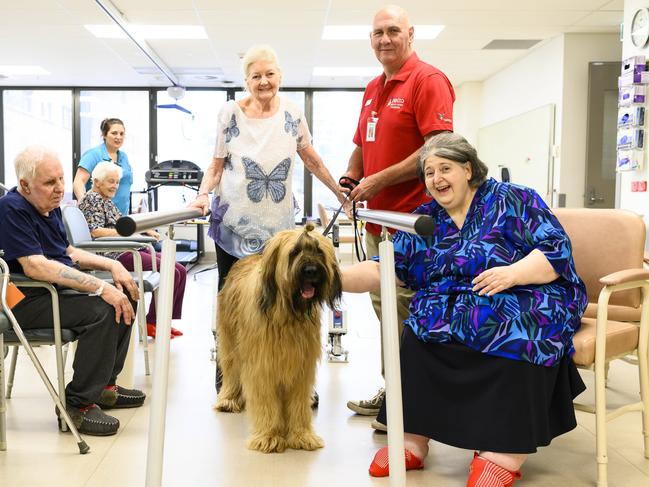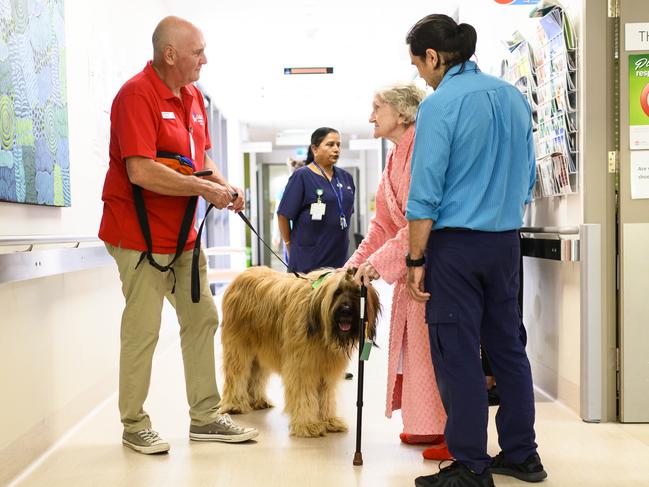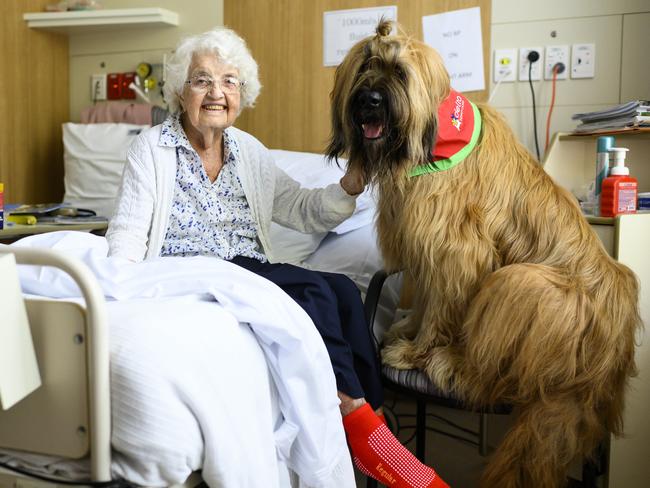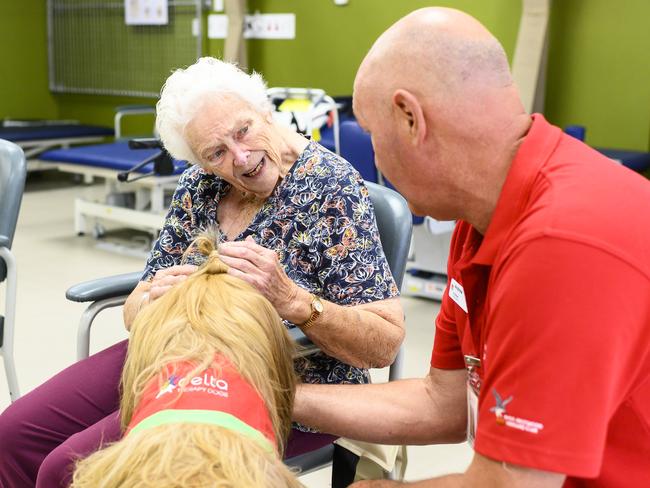Stroke victims and elderly comforted by visits from therapy dogs, just like Mr Bojangles
Therapy dog Mr Bojangles is changing lives by doing rounds at a nursing home and stroke unit. See the heartwarming video of this tail-wagging friend, as well as the best places to take your pooch.
Pets and Wildlife
Don't miss out on the headlines from Pets and Wildlife. Followed categories will be added to My News.
When sick children laugh out loud before major surgery, and stroke victims willingly leave their room for the first time in months, someone’s doing something right.
As Delta Society’s Deborah Rodrigo explains, Delta therapy dogs – visiting hospitals and care facilities with their volunteer owners – have a special impact on an estimated 20,000 Australians each week.

According to Ms Rodrigo, some pooches and owners volunteer for as long as a decade. Sydney volunteer Andrew Saran and his dog Mr Bojangles have been doing the rounds of the Hills District for the past two years, regularly visiting a nursing home and a hospital stroke unit.
“It puts a smile on people’s faces,” Mr Saran said.
DOGS OF OZ COMP
Do you have Australia’s Top Dog? Enter here and WIN!
“It’s a bad place for people to be, especially strokes. You see the stress in their eyes and the frustration that they don’t know what’s happening to them.
“The dog does help to bring them out and relax them. We travel around with the speech pathologist, more than the occupational therapist, because it makes (the patients) communicate more: they’ll talk about him.
MORE DOGGIE NEWS
Death row dogs get a second chance
How families, singles benefit from canine friends
Proof Aussie pooches more spoiled than kids
“We had a gentleman there that had a stroke that hardly said a word – an older gentleman – and we took Jangles in and we couldn’t stop him talking, so it does help.
“It makes people forget about their problems for a while.”
Ms Rodrigo said Delta volunteers usually committed to either weekly or fortnightly visits.

Volunteers are supported by branch managers who regularly touch base via the volunteers’ online group, emails, newsletters and regular reporting, ensuring carers also get care.
“It can be quite an onerous experience going into hospitals and dealing with the gamut of human experience,” she said.

Mr Saran said such support from Delta is welcome, acknowledging it was not always easy for volunteers.
“The environment can be challenging, with patients and families under stress and dealing with serious illness,” he said.

According to Ms Rodrigo, any dog may be well-suited to serve as a Delta therapy volunteer – much like people, it is all about the individual.
“We don’t have a breed preference, we assess all dogs for their temperament,” she said.

“One great example that we use at the assessment is (simulating) a very busy meeting, so you’ll have someone on a walking stick, someone in a wheelchair (and) people walking around the dog in close proximity.”

Assessors measure a dog’s ability to stay calm rather than lunging or barking.
If a dog does get a little nervous, how the animal expresses stress is assessed, along with how their owner identifies and manages the situation.

During visits to hospitals and aged care facilities, Ms Rodrigo said dogs often receive the star treatment, with staff lingering at the entrance the way groupies gather outside hotels.
Eat your heart out, Justin Bieber, there is a Delta dog in the house.

When Mr Bojangles visits Dural’s Lady of Grace in the Sydney nursing home, the big Briard even joins in when residents play games.
“He’s got a card in front of him, so we have a game of bingo with the old dears and they love him,” Mr Saran said.
“It’s good for the staff too, it really is.”

Mr Bojangles has developed some very special bonds with patients across his two years of service, currently including a blind and partly crippled resident at Lady of Grace who cannot move her hands.
“I put a seat beside the bed and he gets up and sits beside her,” owner Mr Saran said. “Sometimes he licks her – she just cries. Sometimes on the way out I hear her say, ‘I love you, Mr Bojangles, I love you’.”
